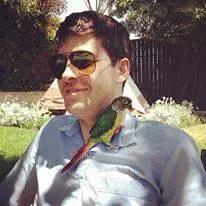The present continuous verb tense, or present progressive, is used to talk about actions that are ongoing or have not been completed. They are eating lunch is an example of a sentence using this verb tense. In Japanese, verbs are conjugated to the present continuous with the pattern て-form + いる.
| I am reading a magazine. | 私 は 雑誌 を 読んで います。watashi wa zasshi o yonde imasu. |
The present continuous can be negated by negating the いる ending.
| It is not raining today. | 今日 は 雨 が 降って いません。kyou wa ame ga futte imasen. |
The past continuous is formed by simply putting the いる ending in the past tense.
| Jon was learning Karate in Japan | ジョン は 日本 で 空手 を 習って いました。jon wa nihon de karate o naratte imashita. |
You will find that the present continuous is often used in situations in Japanese where it would not be used in English and vice-versa. One of the most common examples of this is with the verb 知る, which means to know. When making sentences like I know the answer or What do you know about computers?, you normally use the present continuous in Japanese.
| Do you know the password? | パスワード を 知って います か。pasuwaado o shitte imasu ka. |
Sometimes the present continuous is even used for actions that are already completed. For example, this is the case with the verbs 行く and 来る.
| She has gone to England. (and is still there) | 彼女 は イギリス に 行って います。kanojo wa igirisu ni itte imasu. |
| He has come to Italy. (and is still here) | イタリア に 来て います。itaria ni kite imasu. |
In some cases the て-form + いる can also be used to describe a situation where we would use an adjective in English.
| The door is open. | ドア が 開いて います。doa ga aite imasu. |
| The suitcase is open. | スーツケース が 開いて います。suutsukeesu ga aite imasu. |

